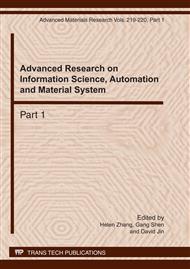p.643
p.648
p.652
p.656
p.660
p.665
p.670
p.675
p.680
Experimental Study on the Shear Strength Characteristics of Municipal Solid Waste
Abstract:
Basing on the traditional tri-axial test instrument with large scale specimen, the shear strength characteristics of municipal solid waste has been studied. The municipal solid waste is divided into three parts: the material that is easy to be biodegraded, reinforced material that is difficult to be biodegraded and the incompressible solid waste material. Two different proportions of these three parts, which are 50%, 15%, 35% and 65%, 10%, 25% is selected. A series of laboratory tests have been performed for different proportion of ingredients, different initial void ratios and different confining pressures. Testing results show that the initial void ratio and the proportion of ingredients are the main influence factor for the shear strength of the municipal solid waste. Besides, the principle effective stress increases with the axial strain and the confining pressure in a hardening increasing trend, and the principle effective stress decreases with the increase of the initial void ratio of the municipal solid waste.
Info:
Periodical:
Pages:
660-664
Citation:
Online since:
March 2011
Authors:
Price:
Сopyright:
© 2011 Trans Tech Publications Ltd. All Rights Reserved
Share:
Citation:


